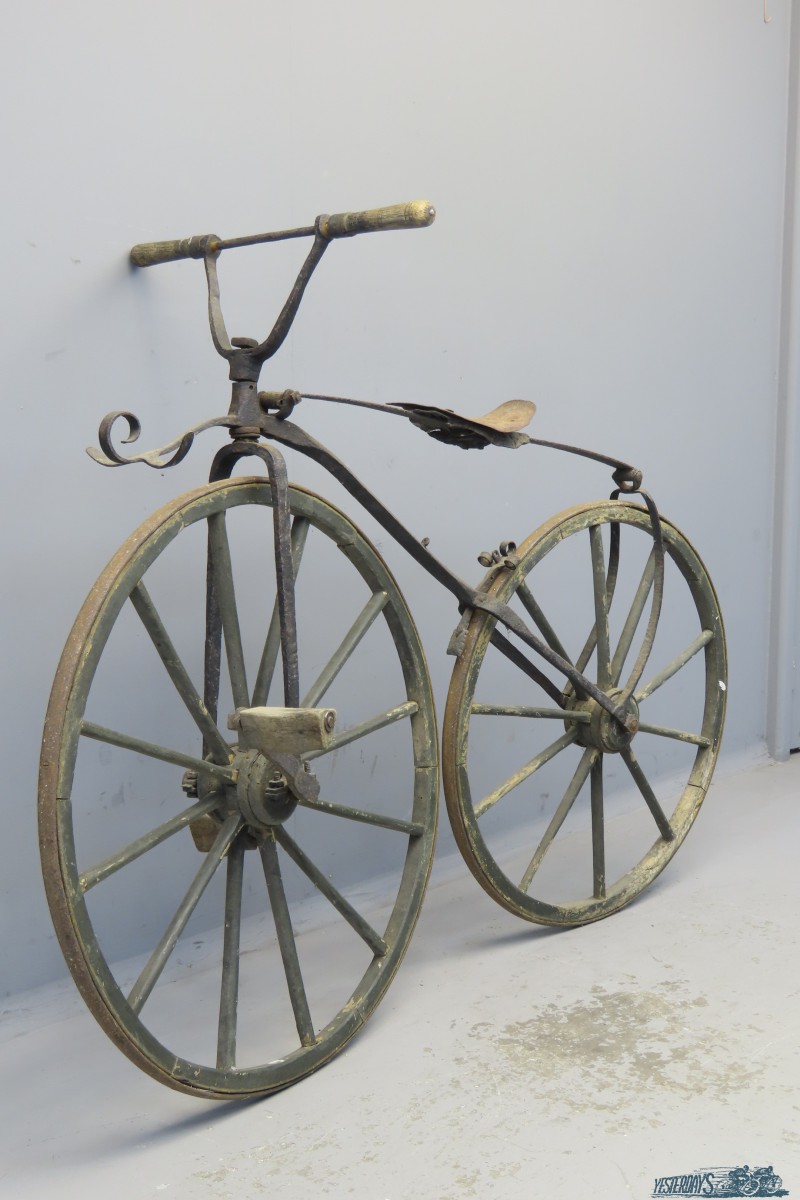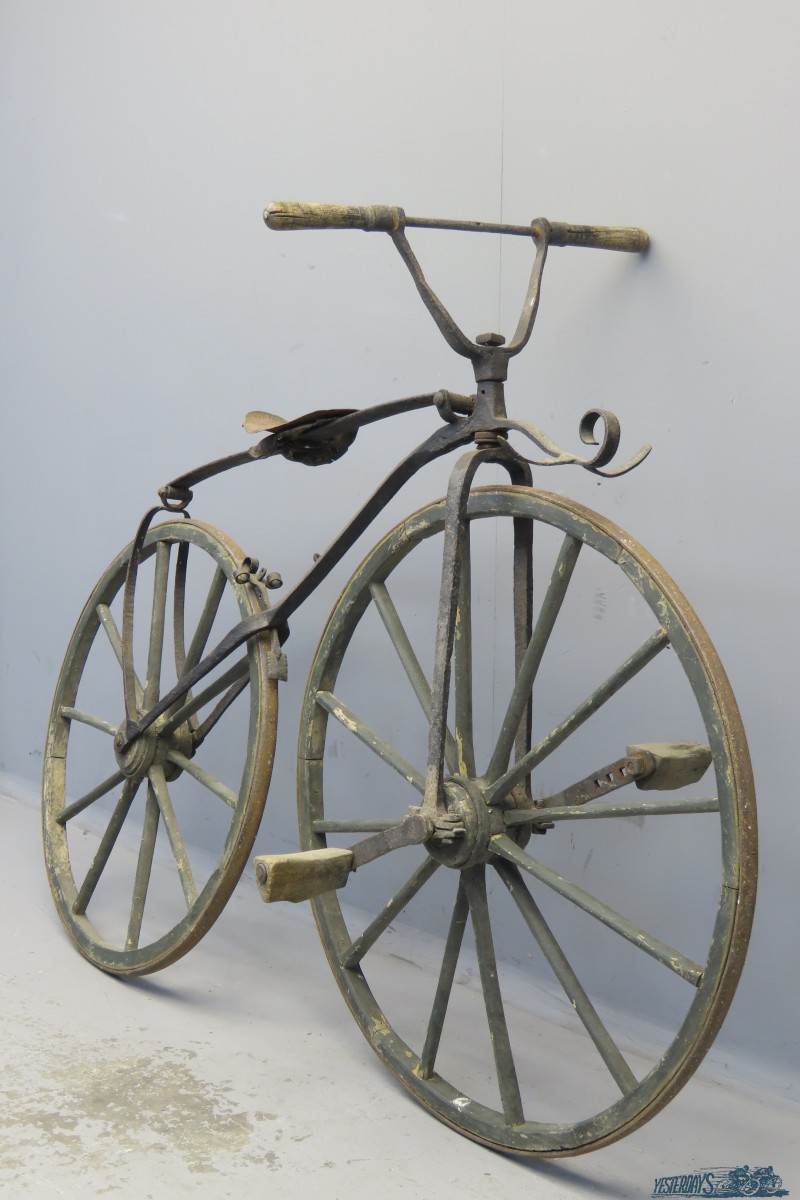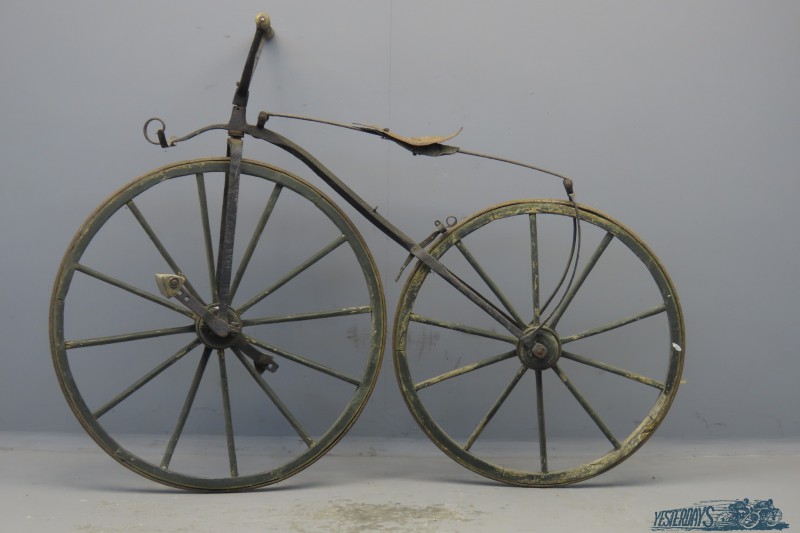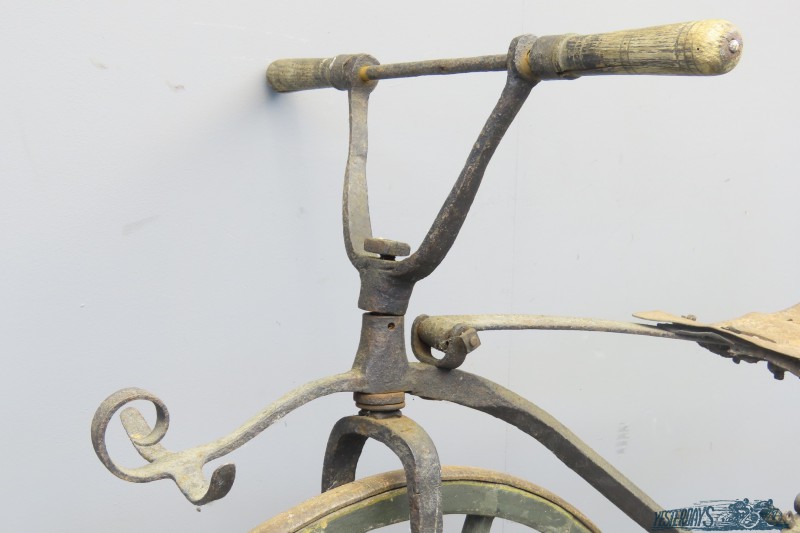Description
Velocipede circa 1870
At the 1867 Paris Exhibition, the French firm of Michaux got a lot of publicity for developing the first commercially-viable version of a two-wheeled, human-powered bicycle: the Velocipede. While they were not the first to do this, Michaux was the first to tinker and perfect the design. When it was demonstrated at the Paris Exhibition, the Velocipede brought worldwide attention to the concept of cycling and sparked a craze of experimentation that would last until the early 1870s.
This specimen comes in unrestored and quite complete although somewhat “wobbly” condition, the string of the braking system and the saddle cover being the only noticeable missing parts.
The brake is a steel lever that is pushed against the steel rim of the rear wheel. The braking lever should be connected by a piece of string to the handlebar and is activated by twisting the handlebar to shorten the string.
The machine has square-section solid frame and forks. The 32-inch wooden front wheel has 10 spokes, the 30-inch rear wheel has eight. Sticking out over the front wheel are the “hock rests”, meant to carry the rider’s lower legs and get them out of the way of the fast-turning pedals when going quickly downhill.





